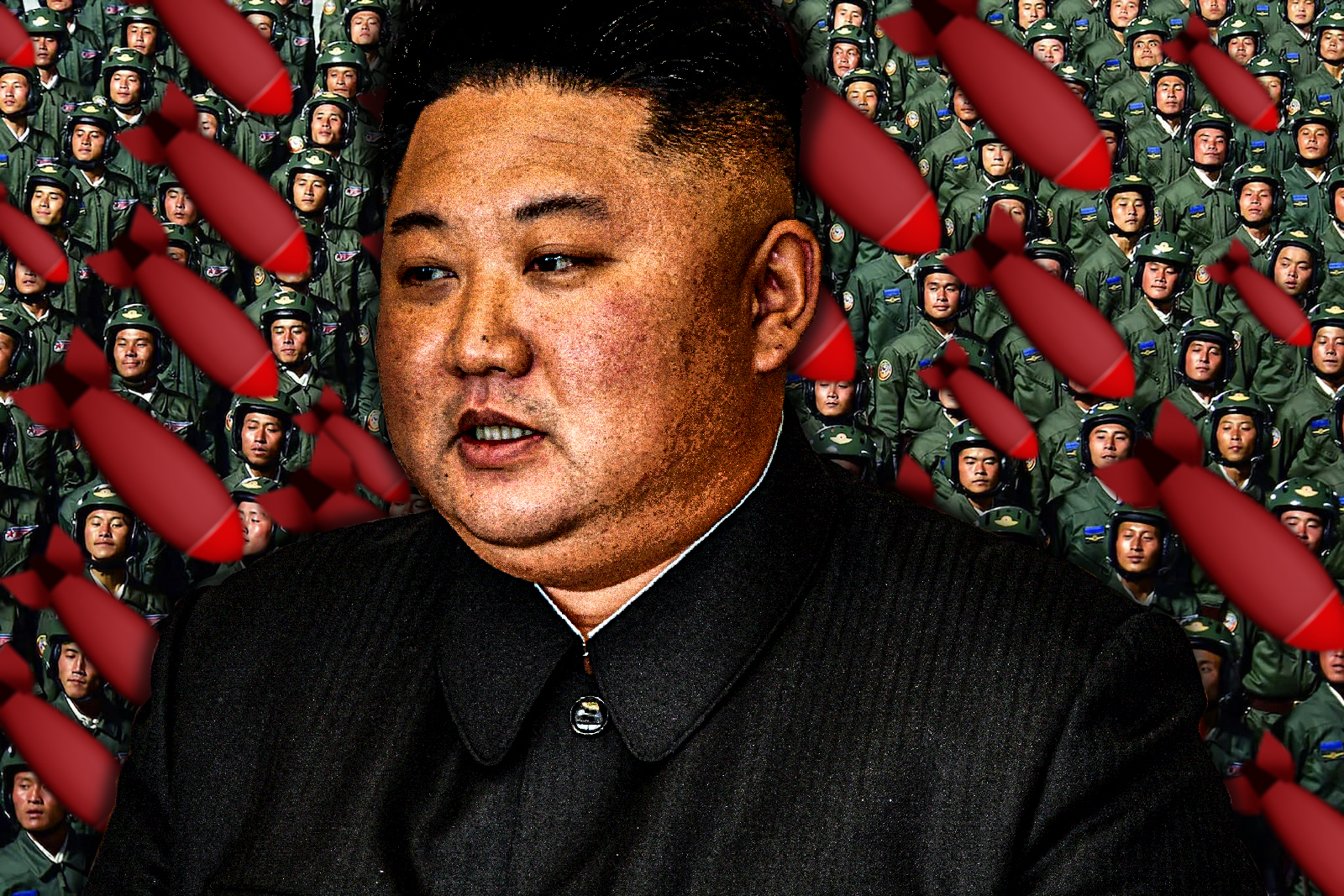
Kim’s Getting Tetchy. North Korea Girds for War
In a significant shift in its foreign policy, North Korean leader Kim Jong-Un has downgraded the United States from its top adversary status, instead designating South Korea as the nation’s principal enemy. During a policy address recently, Kim issued a stark directive to expunge all notions of reunification with South Korea from the national discourse, advocating for a constitutional revision that would officially cast the South as the preeminent threat.
Kim starkly warned that North Korea is not averse to engaging in warfare if provoked. Furthermore, Kim laid out a strategy for the comprehensive occupation and subjugation of South Korea, should hostilities break out, signifying a significant shift in the North’s rhetoric and policies toward its southern neighbor, effectively severing the long-standing identification of South Koreans as ‘fellow countrymen’ in the North’s official narrative.
As part of this new approach, Kim has vowed to dismantle the unification arch his father had built. Straddling the Reunification Highway between Pyongyang and the demilitarized zone separating the North and South, the nine-story arch called the Monument to the Three Charters for National Reunification, completed in 2001, symbolizes the efforts of former leaders Kim Jong-Il and Kim Il-Sung to chart a path toward a unified Korea.
Kim Jong-Un was recently quoted as saying: “We should completely remove the eyesore ‘Monument to the Three Charters for National Reunification’…and take other measures so as to completely eliminate such concepts as ‘reunification,’ ‘reconciliation’ and ‘fellow countrymen’ from the national history of our Republic.”
Pyongyang also announced the abolishment of the Committee for the Peaceful Reunification of the Country, the National Economic Cooperation Bureau, and the Kumgangsan International Tourism Administration, entities all designed for cooperation with South Korea.
Now, Kim is establishing his own way of unification based on power, breaking his father and grandfather’s legacy – a move long assumed to be off-limits even for Kim himself.
In addition to this change in attitude toward its southern neighbor, North Korea just launched a solid-fuel hypersonic missile, with South Korea calling the missile launch “a provocation that seriously threatens peace and stability on the Korean peninsula.”
In response to Kim’s threats, South Korean President Yoon Suk Yeol threatened to punish the North “multiple times” if it carried out its provocation.
The intermediate-range ballistic missile (IRBM) tipped with a hypersonic warhead is supposed to be more difficult to detect and poses a serious escalation and threat to the region.
Analysts say the timing is of concern especially since North Korea’s Foreign Minister just wrapped up a visit to Russia engaged in what are most likely discussions surrounding military cooperation.
On Tuesday, Russian Foreign Minister Sergei Lavrov said he and North Korean Foreign Minister Choe Son Hui would discuss “active work” on implementing the agreements reached by the countries’ leaders.
There are rising concerns among U.S. and European officials that Russia may be using ballistic missiles supplied by North Korea to attack Ukraine. In return, Russia may be supplying North Korea with fighter jets.
Experts believe the weapons exchange was agreed upon by Russian President Vladimir Putin and Kim Jong-Un when they met last September. Putin is expected to visit North Korea on Kim’s invitation “at a convenient time” and based “on mutual agreement.”
Kim Jong-Un’s aggressive push to obliterate the Northern Limit Line (NLL), assert a new maritime demarcation in the Yellow Sea, and entrench a policy to invade the South, starkly illustrates that diplomatic ties have deteriorated to a near point of no return. This move signals a deep-seated estrangement and a foreboding commitment to a martial path that could fundamentally redraw the geopolitical boundaries and destabilize the long-standing armistice.
The NLL is a sea border unilaterally drawn off the western coast by the United Nations after the Korean War to prevent accidental naval clashes. The North does not recognize the line, insisting on its own sea border established further south from the demarcation.
The planned constitutional changes, missile launch, and warning over the NLL come as some U.S. experts caution Kim Jong-Un’s latest threats to start a war may be more than typical bluster and bellicose language.
What worries analysts is that in addition to Russia’s war in Ukraine and Israel’s war against Hamas and possibly Hezbollah in the Middle East, the Korean Peninsula could become a third front. It appears, according to analysts, that Russia and China want to continue stretching U.S. military resources before they launch an all-out confrontation.
The world may be moving toward all-out war, with the West facing an axis of rogue nations, mainly, Russia, China, Iran, and North Korea. This potential threat should be taken seriously by Western capitals.
Germany has already begun preparing for a scenario in which Russia launches an invasion of Estonia, Latvia, and Lithuania in a bid to start a war against NATO countries and expand its war beyond Ukraine to reach farther into Europe. China and Iran would both support such a move, hoping to see a weakened West and a Biden administration distracted by more than one war. For its part, North Korea may also use the distraction created by Russia to launch its own attack on South Korea. China, too, could potentially launch an invasion of Taiwan.
It is thus plausible that the U.S. and European nations could find themselves engaged in an all-out war on numerous fronts in the not-too-distant future. And Russia may just be the distraction North Korea is waiting for.
